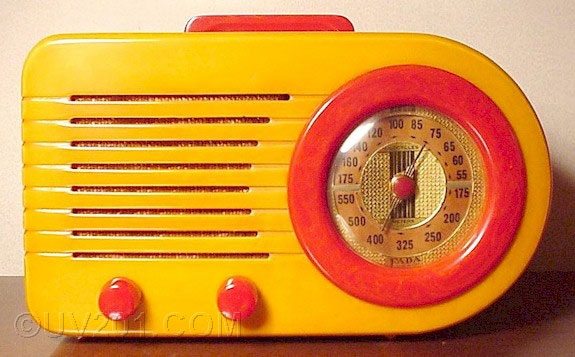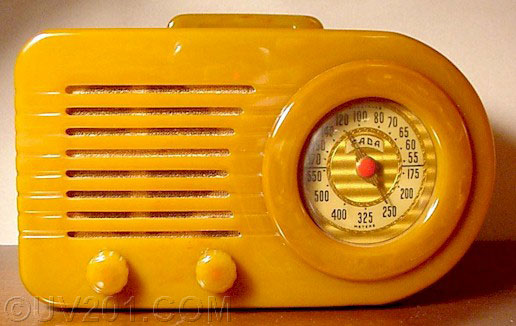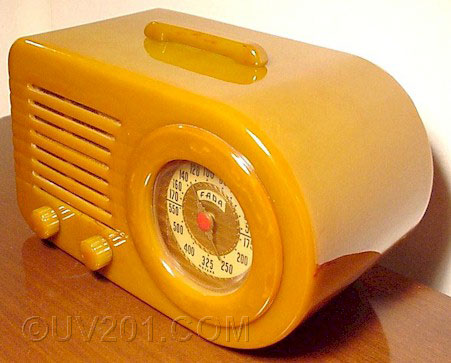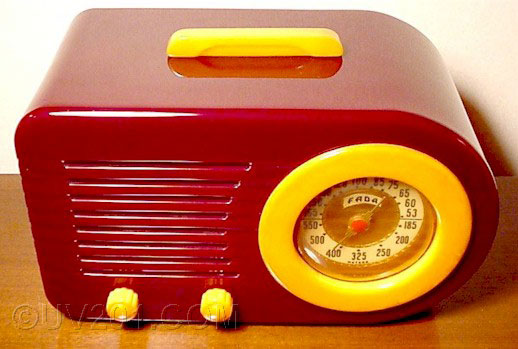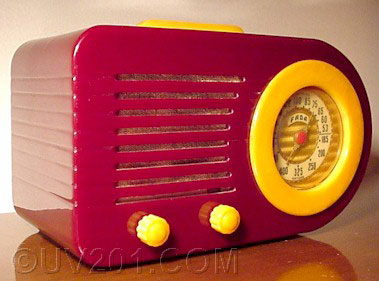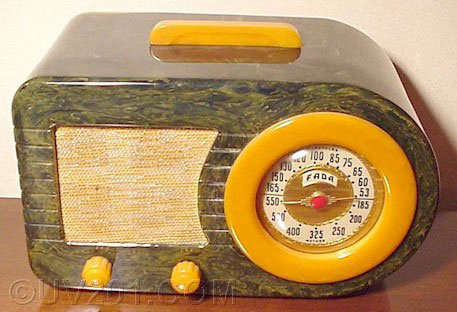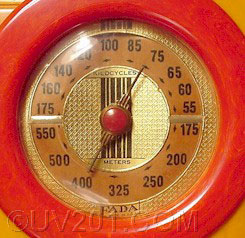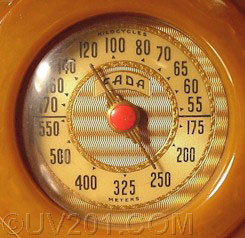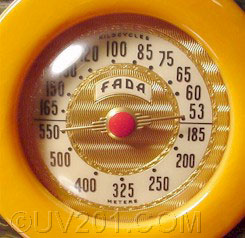|
Fada Model 115/200/1000 "Streamliner" |
||
|
|
||
| The Fada
"Streamliner" radio is a true classic. Introduced in
1941, and re-introduced in 1945, it used a Catalin plastic cabinet in a
variety of color combinations. It's unique shape has earned it the
nickname "Bullet" amongst collectors.
It was normally available in all white, white with red trim, maroon with white trim, a light green with matching trim (called "onyx" by Fada and "pea green" by collectors), and blue with white trim. The white cabinets and trim are now yellow, orange, or butterscotch due to the oxidation to which Catalin is subject. The pea green color has turned a butterscotch color generally darker than the yellow, and blue has turned a dark green or brown shade. An exceedingly rare "patriotic" version of the Bullet was produced just before the US entry into WW-II. This set used a white cabinet with red knobs and handle, and a blue dial bezel. A very few postwar Bullets were produced with open grills (see the blue example below), and even fewer had Catalin grill inserts instead of the grill cloth. Cabinets in which the grill bars had been damaged during manufacture were salvaged in this way. A wood variation of the Bullet was produced just prior to WW-II. |
||
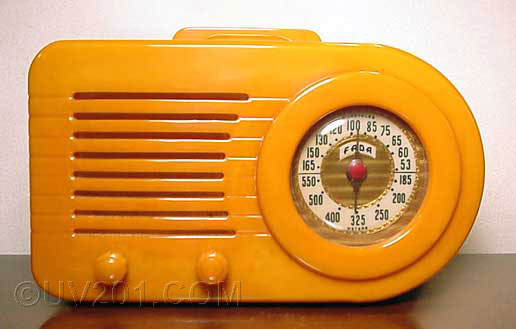 |
||
|
|
||
|
|
||
|
There were numerous chassis variants, and at least 5
distinct model numbers. The earliest models were the 5-tube 115
(broadcast band only) and 116 (broadcast and shortwave). An
updated, 6-tube chassis was used in the models 200 and 189. The
200 was the standard model, and the 189 was the red, white, and blue
version. The final version was the model 1000, introduced after
the war. This was very similar to the 200 chassis, the primary
difference was the use of a permanent magnet speaker. Model 1000
chassis are found with all octal tubes, all miniature tubes, and various
mixtures of the two.
The prewar sets and early postwar sets used thin Masonite backs. A majority of postwar sets used cardboard backs. All 115/116 sets used the smooth rim "gumdrop" knobs. The ribbed variety seem to have appeared with some 200 models, and were used almost exclusively after the war. Two sizes of knobs were used. The smaller (1/2 inch diameter) was used throughout the production of the Bullet, both as gumdrops and ribbed knobs. Some Bullets apparently were sold with the larger size (5/8 inch diameter) ribbed knobs. The larger sized knobs were primarily used with the model 252 and 652 "Temples". As with most Catalin radios, the Bullets tended to crack as the cabinet shrunk. They tended to crack at the corners of the grill area. Some of the dial bezels were glued in with a heavy, rock-hard dark brown substance. Those radios that used this are often found with numerous small cracks around the opening in the cabinet, and sometimes cracks that run all the way to the back. They were very prone to tube burns which appear on top to the left of the handle, and on the left side. The ones that used miniature tubes had much less of a problem. |
||
|
|
||
|
|
||
|
|
||
